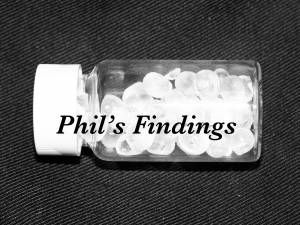Phil’s Findings #5: What am I doing?
20 June 2011

Phil Howes, the Institute of Making’s post-doc researcher, shares his thoughts and findings as he delves into the sensoaesthetic world of materials. Check this space every Monday for Phil's latest posting.
In my previous post I described some of the basic ideas of psychophysics, the science of the senses. This is going to form a core part of my work at the Institute of Making. However, I’m a physicist, and I work in an engineering department. So what’s the connection?
The answer is materials science. This is a diverse area of science based on the study of the physical properties of matter. These properties are things like strength, flexibility and thermal conductivity, and they can be used to describe and characterise all materials. Materials scientists study the structure and composition of materials at a very small scale in order to provide an explanation of how they behave on a large scale. For example, by understanding how the microscopic structure of metal alloys affects their strength, scientists are able to produce new alloys with improved strength and temperature tolerance for high stress applications such as jet engines. Once all of the physical properties of a material have been recorded, this information can be used by the likes of engineers to choose what materials to use for a particular application. This is an extremely refined process, and it is very well understood how specific physical properties of materials relate to their overall behaviour.
There is a huge amount of numerical information about materials available for scientists, technologists and industrialists to use in their work. However, although this information tells us a great deal about the physicality of materials, it sheds very little light on their aesthetic properties. In fact, there is has been very little work which has looked at how the physical properties of materials relate to their sensual and aesthetic properties. Within the world of materials, there exists a big split between the materials science community, those scientists, technologists and industrialists who are interested in the physicality of materials, and those in the materials-arts community who are interested in the sensoaesthetic properties of materials. The two sides do not speak a common language.
The overall aim of my work is to try and fill in this gap by using scientific methods to study those properties of materials which are largely ignored by materials scientists, yet are vitally important to the materials-arts community, consisting of industrial designers, architects and artisans and artists. This brings us back to where we started: psychophysics. The sensoaesthetic properties are strongly dependent on perception, and the study of perception falls within the realm of psychology. This project will combine psychophysics, the science of the senses, with materials science, a discipline driven by physical characterisation. The result? A sensoaesthetic theory of materials.